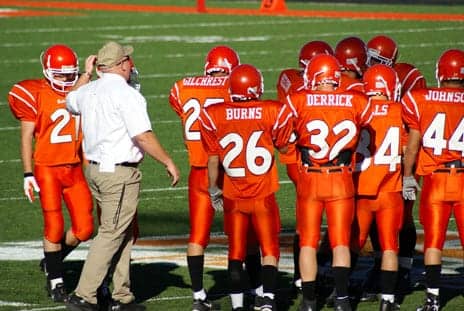A study published in JAMA Pediatrics provides data regarding the incidence of concussion among student athletes playing football at the youth, high school, and college levels, according to a release from The JAMA Network Journals. Per the release, the data suggests that although a slight majority of concussions happened during youth football games, most of the concussions that occurred during games played at the high school and college levels occurred during practice.
First author Thomas P. Dompier, PhD, ATC, of the Datalys Center for Sports Injury Research and Prevention Inc, Indianapolis, and colleagues reportedly studied data collected via three injury surveillance systems: the Youth Football Surveillance System, which included 118 youth football teams, providing 4,092 athlete seasons (one player participating in one season); the National Athletic Treatment, Injury and Outcomes Network, which included 96 secondary school football programs, providing 11,957 athlete seasons; and the National Collegiate Athletic Association Injury Surveillance Program, which included 24 member institutions, providing 4,305 athlete seasons.
According to the release, the study found that during the 2012 and 2013 seasons there were 1,198 concussions reported with 141 (11.8%) of them in youth athletes, 795 (66.4%) in high school athletes, and 262 (21.9%) in college athletes. Concussions accounted for 9.6%, 4%, and 8% of all injuries reported in the youth, high school, and college football groups, respectively.
The results indicate that 53.9% of concussions occurred during youth football games, the release continues, but in high school and college, most concussions (57.7% and 57.6%, respectively) happened during practice. No concussions were reported in youth football players who were ages 5 to 7 years, although the young players accounted for more than 7,000 athlete exposures (AEs, one player participating in one game or one practice).
In games, the release notes, the college concussion rate (3.74 per 1,000 AEs) was higher than those reported in high school (2.01 per 1,000 AEs) and youth athletes (2.38 per 1,000 AEs). In practice, the college concussion rate (0.53 per 1,000 AEs) was lower than that in high school (0.66 per 1,000 AEs).
Youth football had the lowest one-season concussion risks in 2012 (3.53%) and 2013 (3.13%), according to the release. The one-season concussion risk was highest in high school (9.98%) and college (5.54%) in 2012.
The concussion rate among youth players was generally not different from that among high school and college players, compared with other injuries, the release explains. However, the release continues, practice play was a major source of concussion among all three competition levels.
Concussions during practice might be mitigated, the release adds, and their occurrence should prompt coaches and others to evaluate players’ technique and head-impact exposure. Although it is more difficult to change a game’s intensity or conditions, many strategies could be used to limit player-to-player impact and other behaviors that could cause injury, the release concludes.
[Source(s): The JAMA Network Journals, Science Daily]





